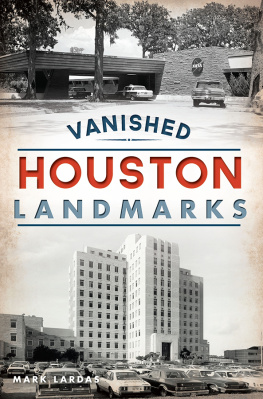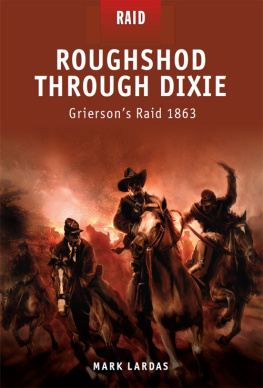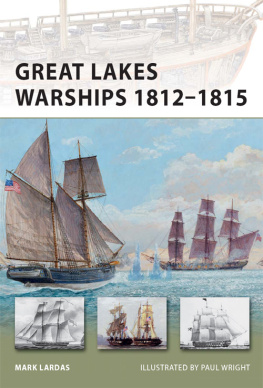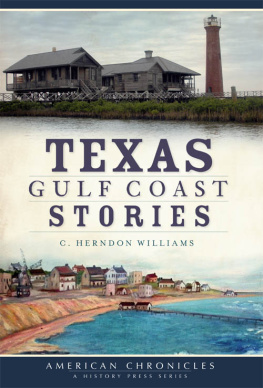Published by The History Press
Charleston, SC
www.historypress.com
Copyright 2021 by Mark Lardas
All rights reserved
Front cover, top: The Mexican Iron Steam Frigate Guadalupe. Authors collection. Front cover, bottom: Galveston after the 1900 hurricane leveled the town. Library of Congress. Back cover, top: Cabeza de Vaca makes an unscheduled arrival in Texas. Authors collection.
First published 2021
e-book edition 2021
ISBN 978.1.43967.317.1
Library of Congress Control Number: 2021937217
print edition ISBN 978.1.46714.985.3
Notice: The information in this book is true and complete to the best of our knowledge. It is offered without guarantee on the part of the author or The History Press. The author and The History Press disclaim all liability in connection with the use of this book.
All rights reserved. No part of this book may be reproduced or transmitted in any form whatsoever without prior written permission from the publisher except in the case of brief quotations embodied in critical articles and reviews.
ACKNOWLEDGMENTS
No book is the product of a single author. Many folks helped me as I wrote and assembled this book. Those I would especially like to note include:
The Helen Hall Library in League City, which went above and beyond in providing materials from their Local History Collection and securing other material through interlibrary loan. Your local public library is a great starting point for any researcher.
Justin Parkoff of the Texas Maritime Museum, Mark Underhill, Burt Reckles, Charles Cosewith and William Wardle for providing information used in this book. Justin Parkoff provided new information about Zavala that led me to rewrite the ending of that chapter.
Charles Cosewith and William Wardle allowed me to use their models in illustrations. Thanks, I appreciate it.
Charles Cosewith, Mark Underhill, Justin Parkoff and William Lardas for photos used in this book.
I would also like to thank Ben Gibson, my editor at The History Press, for his assistance.
The following abbreviations indicate the sources of the illustrations used in this volume:
AC: authors collection of images
LOC: Library of Congress
POHA: Port of Houston Authority
UHDL: University of Houston Digital Archive Library
USNHHC: United States Navy Heritage and History Command.
Other photographers are listed in full.
INTRODUCTION
The Texas coast is filled with ghosts. These ghosts are not what are traditionally thought of as ghosts: haunts, the unquiet dead who do not sleep peacefully in their graves. Rather these ghosts are those of Texas history. They are the men and women, ships and events that shaped Texas history and have been forgotten over timethe people and things that made Texas what it is today, invisibly influencing Texas from its beginnings through the present. Their presence haunts Texas, sometimes for ill but more frequently for the better.
People associate Texas with cowboys and cattle, cotton and oil. Today, Texas is high-tech: the Telecom Corridor in Dallas, computers in Austin, NASA in Houston. Many think of it as a product of its land.
Yet Texas has always been influenced by the sea. For 350 years, the sea carried Texas history. It brought explorers, castaways, pirates, empresarios, immigrants and cargoes. It carried away Texass agricultural goods, bringing wealth to the state. Before the railroad and telegraph, the sea was the quickest way to communicate with the state or for the state to communicate with the outside world.
From Texass discovery in 1519 until after the Civil War in the 1870s, the easiest way to reach Texas was by sea. Swamps guarded its eastern approaches, as did arid plains to its north. Inhospitable deserts shield its southwest and west frontiers. The only easy access to Texas came through the Gulf Coast on its southeast. A man could cross the swamps, plains or desert by foot or on horseback but could carry little with him. You would be lucky to bring in more than the provisions required to carry you across those barriers.
You certainly could not carry the wealth of Texas out that way. Cotton, cattle and corn were valuable but carrying the quantities required for a profitable trip was not possible on horseback, by packhorse or even by wagon. Until the railroad and automobile arrived carrying these cargoes, distances greater than thirty meant they had to be carried by boat on Texass rivers to the coast and from there to East Coast and European markets by seagoing ships.
The sea shaped Texass destiny. It brought the first Spanish and French to Texas. It carried the Old Three Hundred to Texas. It helped Mexico gain independence from Spain. Texass independence from Mexico was secured by sea. The Texas Navy kept Texas an independent republic even as Mexicos other breakaway states were forced back into Mexico. Later, the sea brought the Germans to Texass Hill Country. During the Civil War, battles fought on Texass coasts allowed Texas to remain the last unconquered part of the Confederacy. (If you ask most native Texans, Texas did not lose the Civil War so much as it decided to rejoin the Union after the rest of the Confederacy gave up.)
After the Civil War, the sea still brought Texas fortune. Galveston became one of the great immigration ports of the United States, second only to New York City. Texass seaports boomed, the railroads fueling their growth rather than stifling it. Today, Houston is the nations second-largest seaport. The seas bounty also provides wealth to Texas in the form of its shrimping, fishing and offshore oil industry.
Most of this wealth was hard-won. Texass seacoast is shallow, filled with shifting sandbars. Corpus Christi, Port Arthur, Orange and Brownsville emerged through human effort, carved out of offshore shallows. Texass greatest seaport, Houston, is completely man-made. Even Galveston, its finest natural seaport, is largely artificial, dredged from the mud on the bottom of Galveston Harbor and Galveston Bay. Much of the spoil used to create its harbor helped raise Galveston above the sea.
This history is largely forgotten today. Most of Texass cultural memory is landlocked. Its past is a tale of cowboy and trail drives and journeys on horseback or aboard the iron horse. Its present is associated with oil fields, high-tech industry and cutting-edge medicine. Its maritime heritage has faded to invisibility, faded and ghostlike. The Texas Rangers are remembered; the Texas Navy is forgotten. Space captures the imagination, not shipping.
This book attempts to remind Texansand everyoneabout Texass neglected maritime heritage. I start at the beginning and go to the present. Along the way, you meet a varied cast. I reanimate the ghosts of Spanish, French and German noblemen; various pirates; and an awful lot of ordinary folks who manned the ships, loaded and unloaded them or simply came to Texas by sea. There are some businessmen, a few politicians (every tale needs villains) and quite a few naval officers, some more competent than others.
The inhabitants of Texas prior to the Texas Revolution were natives or colonists, Texians during the revolutionary era and the years of the Republic of Texas, and Texans after Texas became part of the United States. It does not matter what they called themselves, however. By whatever name, they were and remain affected by the sea and its influence on Texas, even if they do not realize it.












